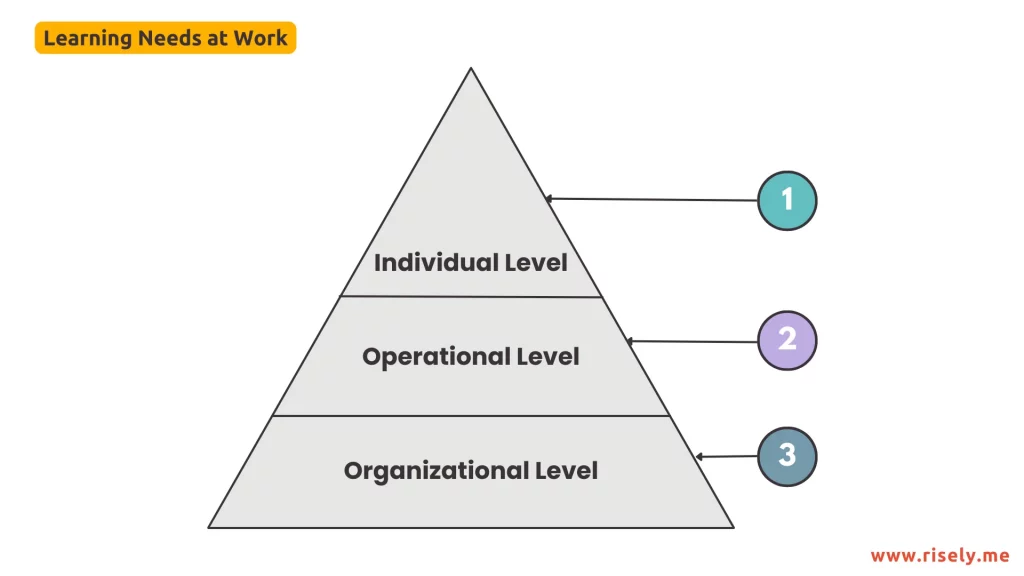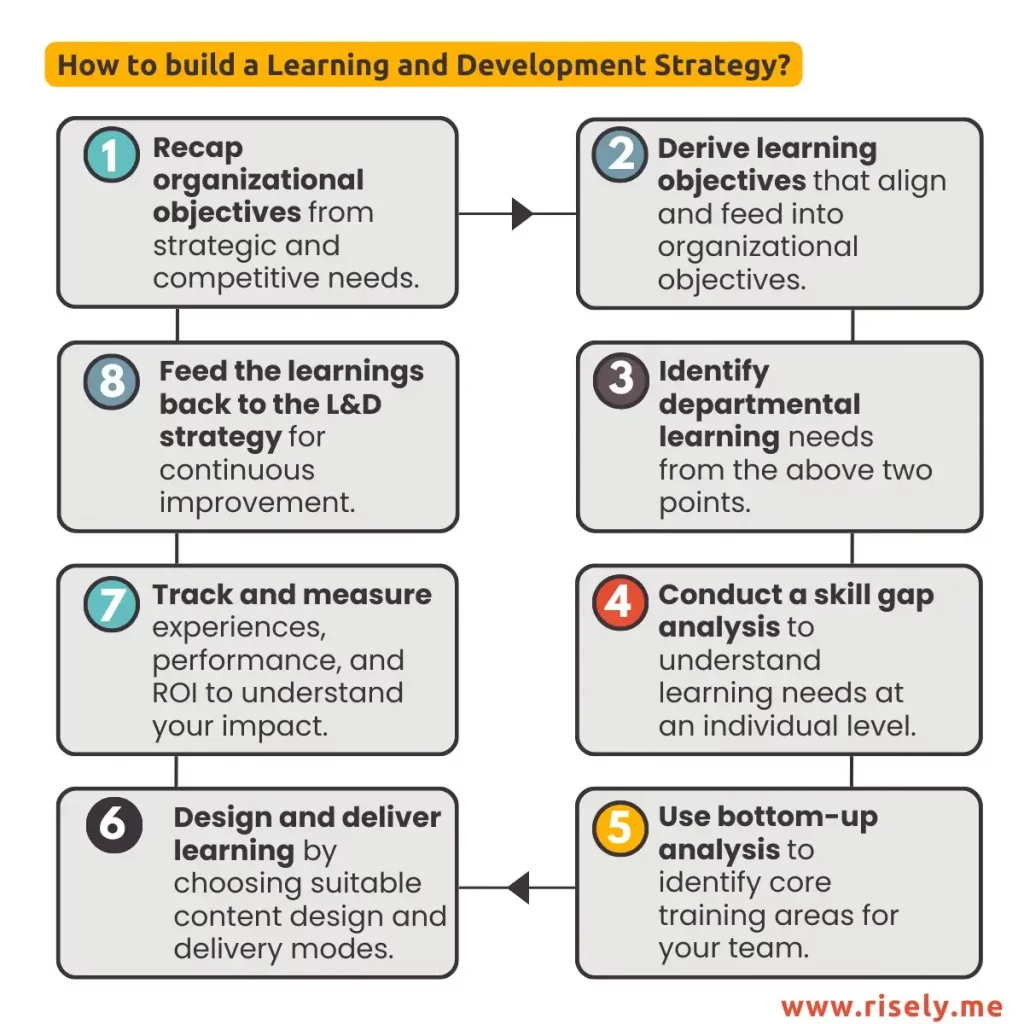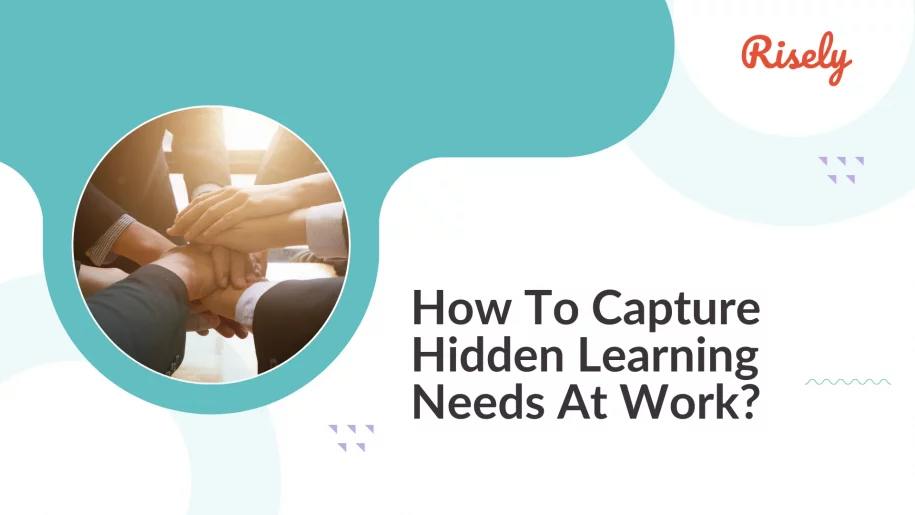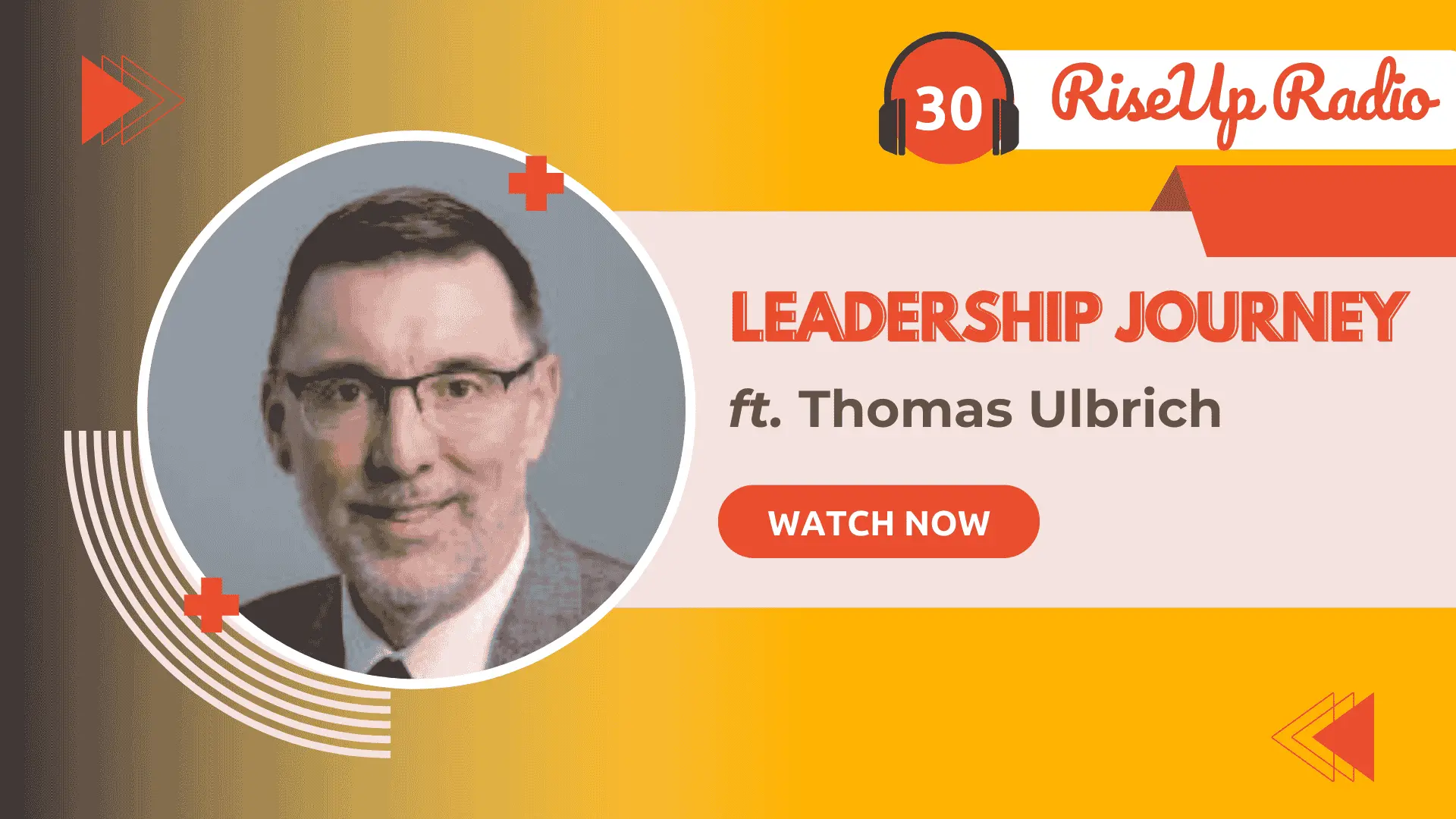How To Capture Hidden Learning Needs At Work?
Learning and development are critical to professional success. It is not just yours but that of your team when your job role includes the word L&D. However, the big question is, what should someone learn? Is that course on AI enough for the whole company? Or does the matter merit more consideration? I’d say it surely does. Learning needs are not exactly easy to spot. At times, they are hidden behind layers of team hierarchy, sloppy task completion, and performance reviews that always indicate a moderate level of achievement. In this blog post, we will track down learning needs—what they are, what they look like, and, most importantly, how can we spot them from a mile away with solid analytical processes.What are learning needs at work?
Any organization has a key set of objectives that it wants to accomplish. To ensure that the motion goes forward, every employee needs a certain set of skills, knowledge, and capabilities. Yet, some teams or team members might sometimes fall short of the requirements. These gaps that L&D needs to bridge are termed learning needs.Learning needs at work refer to the skills, knowledge, and competencies that your people need to effectively contribute to organizational objectives.
Your team’s learning needs can be in many areas including the hard and soft skills they possess, leadership and management capabilities, industry knowledge, cultural competence, and compliance issues to name a few. We can also look at learning needs in a three tiered structure based on what scope they have.- Organizational learning needs: These concern the entire organization and often arise from bigger reasons like technological advancements calling for shift in how people work or new compliance training needs coming from legal changes.
- Operational learning needs: These are broadly concerned with the day to day activities of your particular team members and the knowledge, skills, and capabilities needed to accomplish them properly.
- Individual learning needs: At the last level, the learning needs are about the individual employee who might be facing performance issues or undergoing job transitions.

Why do learning needs arise at work?
Learning needs are essentially caused by a shift:- Changing organizational objectives: Performance objectives and the learning and development plans needed to support them are defined by what the organization aims to achieve. Thus, new learning needs arise when an organization undergoes a major strategic pivot. For instance, if an insurance provider decides to offer all of their services online, their employees need to enhance digital literacy.
- Changing organizational context: A company’s objectives are not moved in isolation. More often than not, they result from some external movement, such as shifting customer expectations, competitive pressure, or changes in their external environment (which includes political, social, legal, economic, and technological movements.)
- Evolving technology and industry: This must be the most evident because AI now seems omnipresent. Several organizations are trying to use AI to cut down on expenses and support operations. The HR tech giant Lattice even set up digital employees with similar calendars to humans. But what do all these changes mean for people? We have all learned to interact with AI with safety and privacy considerations. Those in roles like content writing and software engineering have integrated AI into their processes. L&D teams are also catching up to speed with AI training for workers.
- Changing job roles: Learning needs also arise when one changes jobs. This can include learning a new industrial context while performing similar hard tasks at a new company, taking up a leadership role within the same team, or switching departments internally. In these scenarios, employees need to learn more to effectively perform their roles.
- Performance gaps: The discrepancy between current skills and expected skills leads to performance gaps, which are also the biggest and most common informants of learning gaps at work.
Why do learning needs at work matter?
If learning needs remain hidden in the workplace, it can lead to a host of negative consequences. Employees may continue to underperform, leading to decreased productivity and satisfaction. Unaddressed learning needs can also result in missed opportunities for growth and innovation within the organization. Moreover, if these needs are not identified and addressed promptly, it leads to higher turnover rates as employees feel stagnant or undervalued. Ultimately, the organization may struggle to adapt to changing market demands and maintain a competitive edge.Other Interesting Reads
How to conduct a learning needs assessment?
Finding hidden learning needs is important for promoting individual learning and reaching learning outcomes. We can create better development plans by looking deeper than just surface-level observations. This allows us to meet the specific needs of each employee, which leads to effective and meaningful learning experiences. Let’s understand each of these in detail.What is a learning needs analysis?
A learning needs analysis is a systematic process used to identify the gap between the current knowledge, skills, and abilities of employees and what is required for them to perform effectively in their roles. It involves assessing individual and organizational learning requirements through methods such as surveys, interviews, observations, and data analysis.
Where will a learning needs analysis help you?
A learning needs analysis will help you figure out:- What skills, competencies and knowledge areas does your team need to work on?
- Who needs to work on what aspect and till what extent?
- What learning gaps are causing performance issues on the team?
- What are the vital learning needs for your organizational objectives?
Training needs vs. Learning needs: Which way to go?
They sound similar. They are somewhat similar, but they are not exactly the same. Learning needs offer a broader scope of activity and allow you to think of long term L&D and organizational objectives and tie in with the employee’s personal growth objectives too. Training needs analysis is concerned with answering what training should be offered to who and for how long. Primarily, we can sum it up as:| Training Needs | Learning Needs |
|---|---|
| Training needs focus on the specific skills or knowledge employees must acquire to perform their job effectively. It is more task-oriented and relates to immediate job requirements. | Learning needs encompass a broader scope, including personal growth, long-term development, and overall career progression. They go beyond job-specific skills to encompass continuous learning and future readiness in a rapidly evolving work environment. |
Symptoms that your team has hidden learning needs
Before we start searching for learning needs, there are a few basic symptoms that can give us a head-start. Consider that your team needs help, if:- Decreased motivation or enthusiasm for work tasks.
- Difficulty adapting to changes in processes or technology.
- Low confidence in tackling new challenges or projects.
- Poor communication or collaboration skills within teams.
- Increased errors or lack of efficiency in daily tasks.
Methods of spotting learning needs at work
There are several effective methods that you can use to identify learning needs at work, such as:#1 Skill gap analysis
A major part of discovering hidden learning needs is doing a thorough skills gap analysis. This means figuring out the difference between the skills needed for a job and the skills the employee currently has. By identifying these gaps, you can create focused training programs that aim at certain areas for improvement. You can use templates and guides for these processes, like Risely’s free skills gap analysis template for individuals and Risely’s free skills matrix template for teams.#2 Observation and overviews
Another helpful method is to watch employees in their daily tasks. This can show hidden signs of skills gaps. For example, you can check how good they are at using new software, how they communicate in teams, or how they solve problems when they face challenges. The best part is that you can outsource this job to their managers. The direct managers often have insights and ideas on how their employees can perform the best. This goes in tandem with using performance reviews as a source of information.#3 Employee inputs
Surveys are a good way to collect a lot of numerical data. When you make surveys for a needs analysis, try to use different types of questions. Include multiple-choice questions, rating scales, and open-ended questions. This will help you get plenty of feedback. A good method to add a qualitative angle to the above information is to hold focus groups with employees, especially those who are directly affected by the issue. These talks can show what challenges employees face every day. They help find out if there are deeper problems that stop workers from doing their best. For instance, if the onboarding process is wrong or if employees don’t have the tools they need, this could cause a performance gap. Interviews, on the other hand, let you gather detailed information. They help you understand what individuals think and feel. One-on-one interviews give employees a chance to share their career goals, learning styles, and where they think they need help, but it could mean a lot of workload for you!Integrating learning needs with L&D strategy
Gathering data is just part of the challenge. To really make the most of this exercise, you should organize your findings into useful insights. This means not just listing the gaps, but also grouping them into clear categories. Not all learning needs are equally important for business success. It is vital to match learning efforts with business goals. Showing this clear link between L&D programs and real business results will help you get support from senior leaders. This also makes it a strong argument for more investment in your L&D programs. This matching means understanding what is important for the organization and how each team helps meet those goals. For example, if a company wants to improve customer satisfaction, skills like communication, product knowledge, and customer service should be the focus. Plus, when employees see how their personal learning paths relate to the company’s goals, they are likelier to be engaged. When they are committed to their growth, this leads to a more invested and motivated workforce.
Wrapping Up
Identifying and addressing hidden learning needs at work is important for helping employees grow and for the growth of the organization. You can find skills gaps that are not easy to see using effective methods like surveys, interviews, and data analysis. It is important to focus on these learning needs based on their impact and connect them to business goals. This way, employee training can be more targeted. Combining learning needs with the overall learning and development (L&D) plan and including clear success metrics helps you effectively demonstrate impact.Get started with a free skills matrix template!
Grab free L&D resources and more for holistic growth of people managers.
Only on Risely.
How to Build a Leadership Journey? ft. Thomas Ulbrich
Effective leadership doesn’t always begin with a grand vision. Sometimes, it takes root in the courage to take the first…
AI and Leadership Development: Driving Synergy for Growth
AI and Leadership Development: Driving Synergy for Growth You know the frustration all too well. Your organization invests thousands in…
How Are AI Learning Platforms Transforming Leadership Development?
As an L&D leader, you’re likely familiar with this frustrating reality: 82% of organizations consider leadership development critical(1), yet only…
5 Essential AI Skills for L&D Leaders
5 Essential AI Skills for L&D Leaders According to LinkedIn’s 2025 Workplace Learning Report(1), 71% of L&D professionals are now…
How to Create a Course with AI: A Guide for L&D Professionals
How to Create a Course with AI: A Guide for L&D Professionals According to a McKinsey survey(1), only 11% of…


